Isis: 5 maps that show how fast the group has spread through Syria and Iraq
The terror organisation has extended its influence at an alarming rate
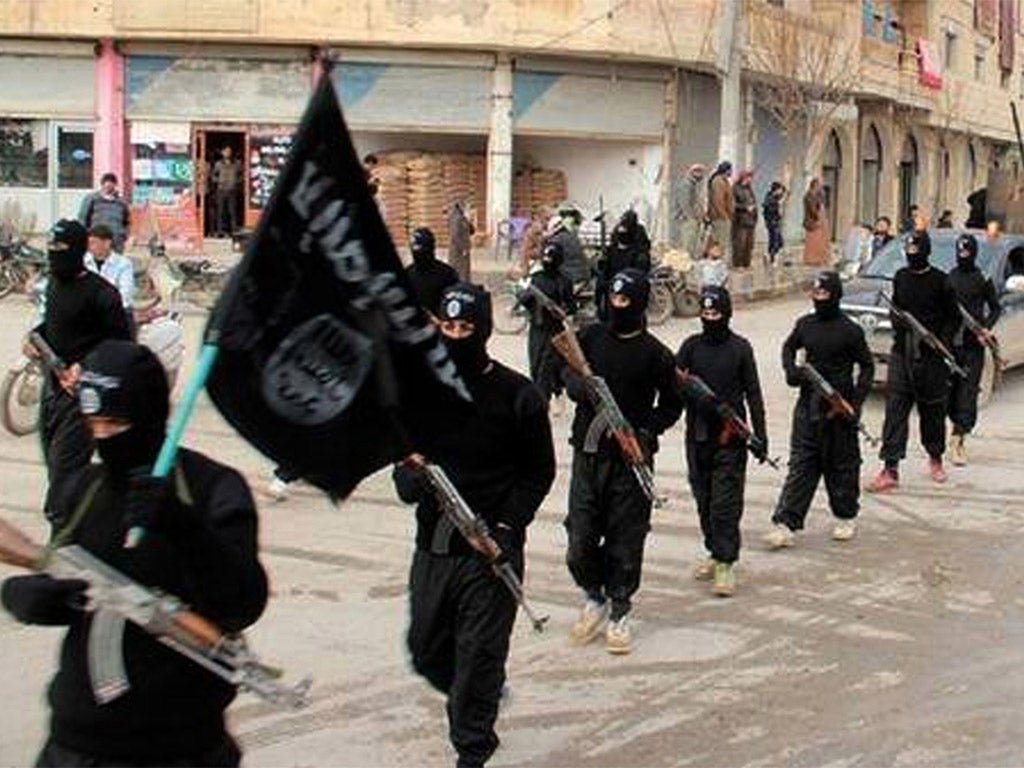
Your support helps us to tell the story
From reproductive rights to climate change to Big Tech, The Independent is on the ground when the story is developing. Whether it's investigating the financials of Elon Musk's pro-Trump PAC or producing our latest documentary, 'The A Word', which shines a light on the American women fighting for reproductive rights, we know how important it is to parse out the facts from the messaging.
At such a critical moment in US history, we need reporters on the ground. Your donation allows us to keep sending journalists to speak to both sides of the story.
The Independent is trusted by Americans across the entire political spectrum. And unlike many other quality news outlets, we choose not to lock Americans out of our reporting and analysis with paywalls. We believe quality journalism should be available to everyone, paid for by those who can afford it.
Your support makes all the difference.Isis, the jihadist group synonymous with extreme violence, religious fanaticism, instilling fear and its slick propaganda and military machine, has grown exponentially in the past year.
It has forged connections with other terrorist groups, inspired fighters from Britain, France and Germany to join its brutal regime and orchestrated assaults across the world.
Most recently, the so-called 'Islamic State' boasted of carrying out coordinated attacks just a day apart in Beirut and Paris, in which 43 and 129 people died, respectively.
In turn, the terror organisation has spread and diversified, escalating its control in the Middle East. It announced the construction of a "caliphate" stretching from Aleppo in Syria, to Diyala in Iraq, and now occupies a large area across both countries.
The US Central Intelligence Agency believes Isis may now have up to 31,000 fighters in the area, many of whom are foreign recruits, the BBC has reported.
These maps show just how far the influence of Isis and its allies has spread in the region over the past year.
June 2014
In January 2014, fighters from al-Qa'ida in Iraq, part of umbrella organisation the Islamic State of Iraq and al-Sham (Isis) took over the city of Fallujah, 40 miles west of Baghdad. From April through to June the group targeted a number of Iraqi dams, shutting the gates to allow them easier access to government forces and redirecting the flow of the Euphrates River. Over the same period Isis fighters also claimed Ramadi, the capital of Anbar province. Since June 2014 the group has taken control of territories to the south of its strongholds in Raqqa, Syria, and Mosul, Iraq.

November 2014
Isis seized the Mosul dam in northern Iraq at the start of August 2014, but it was recaptured later the same month by Kurdish and Iraqi forces, backed by US air strikes - a move that prevented a "catastrophe", President Obama said. The group then went on to attack the country's second largest dam at Haditha, but the US launched new air strikes to help local Sunni tribes hold off the advance. The Syrian Kurdish town of Kobani, on the border between Syria and Turkey, became a key battleground. Thousands of civilians fled fierce fighting between Isis militants and Kurdish forces battling to defend the border town.
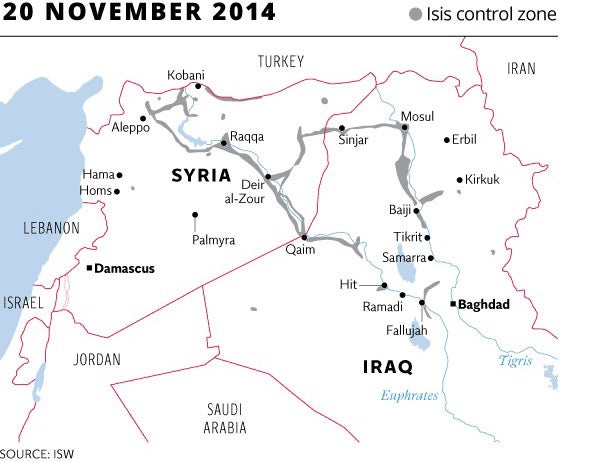
April 2015
The US-led coalition succeeded in driving Isis out of the key border town of Kobani in Syria in January, after months of fighting and reports of around 1,600 deaths. US Central Command announced at the time that Kurdish forces controlled 90 per cent of the town.
Shia militias helped recapture the Iraqi city of Tikrit in April 2015, one of the first cities Isis overtook. The month-long operation was hailed as a major victory, particularly for the alliance of the Shia popular mobilisation units, who fought alongside regular forces and local tribal fighters, supported by coalition air strikes. Isis had held the city for eight months.
Isis suicide bombers targeted government buildings in Ramadi in April this year as part of a counter-offensive, following a series of losses. They captured three villages in the western Anbar province capital.
Later the same month the Iraqi military reportedly killed 250 Isis fighters in a fierce battle to take back swathes of Anbar - by this point the extremist group had lost about a quarter of the territories it initially seized in northern Iraq, including Tikrit.
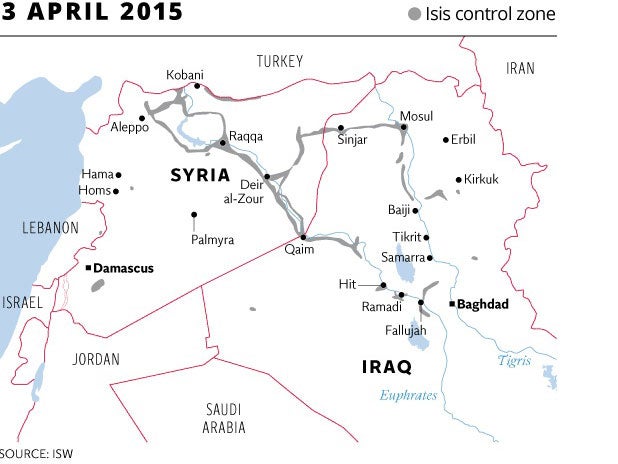
June 2015
Isis fighters defeated the Iraqi armed forces to capture the city of Ramadi in May, in what was described as the worst military disaster suffered by the Iraqi government since it lost the north of Iraq to an Isis offensive almost a year before. Some 500 soldiers and civilians were killed in fighting in the city, 70 miles west of Baghdad, and around 25,000 people fled.
The same month, Isis seized Palmyra in Syria, a major UNESCO world heritage site. Pro-government forces withdrew from the town and hundreds of statues were moved to safe locations, but the militant group released a video in June purporting to show the murder of 25 Syrian soldiers at the ancient ruins. The organisation went on to destroy the ancient Baalshamin Temple and Temple of Bel, which was 2,000 years old, in addition to three famed funerary towers.
In mid-June the militant group was driven out of the key Syrian town of Tal Abyad by Kurds and rebels near the Turkish border. Members of the People’s Defence Units (YPG) were backed by rebel battalions and air strikes by the US-led coalition to seize Tal Abyad. Fighters were seen waving their yellow flags in victory and allies from the Free Syrian Army hoisted their own banner over the town, which was seized by Isis in June last year.
Isis militants re-entered the Syrian border town of Kobani in June, despite being driven out five months earlier in a victory for the US-led coalition forces.
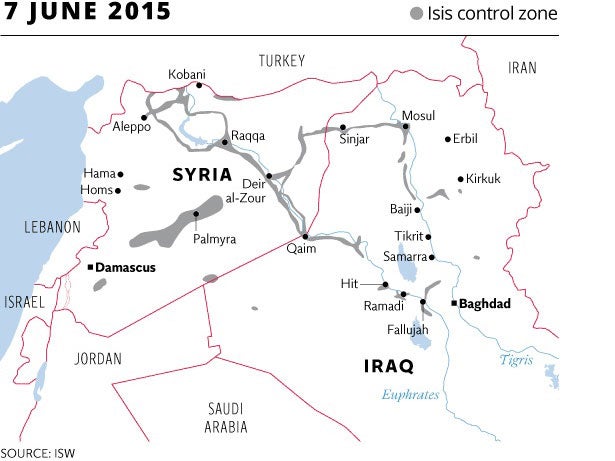
November 2015
Syrian government war planes launched a series of attacks on Isis positions using weapons supplied by its ally, Russia, in September.
At the start of November, Isis forces seized the "strategically important" Syrian town of Maheen in the southwest of Homs province, according to a human rights group. The victory means Isis is just 13 miles from the main road that connects the Syrian capital Damascus to the northern cities, including Homs.
The militant group has strongholds in the country's north and east, but has increased its presence in Homs province since taking over Palmyra and Al-Qaryatain earlier this year.
The group now controls an area stretching from Palmyra to the Syrian-Iraqi border, and to the Syrian-Jordanian frontier.
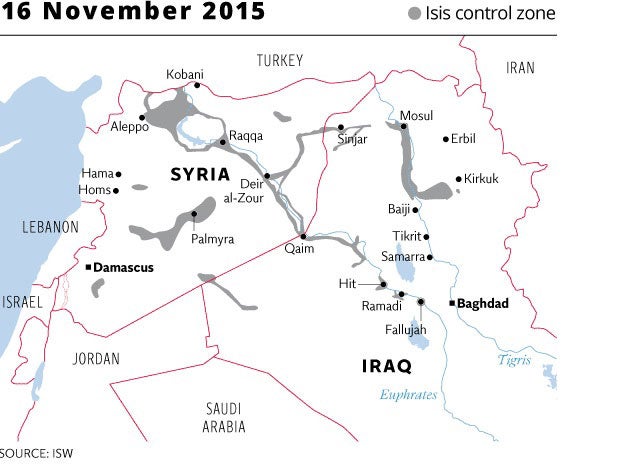
Join our commenting forum
Join thought-provoking conversations, follow other Independent readers and see their replies
Comments